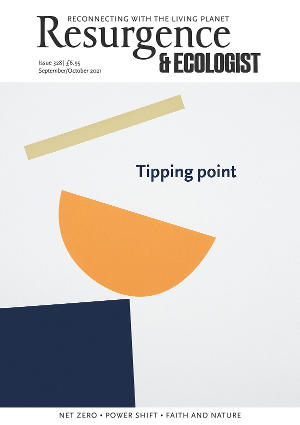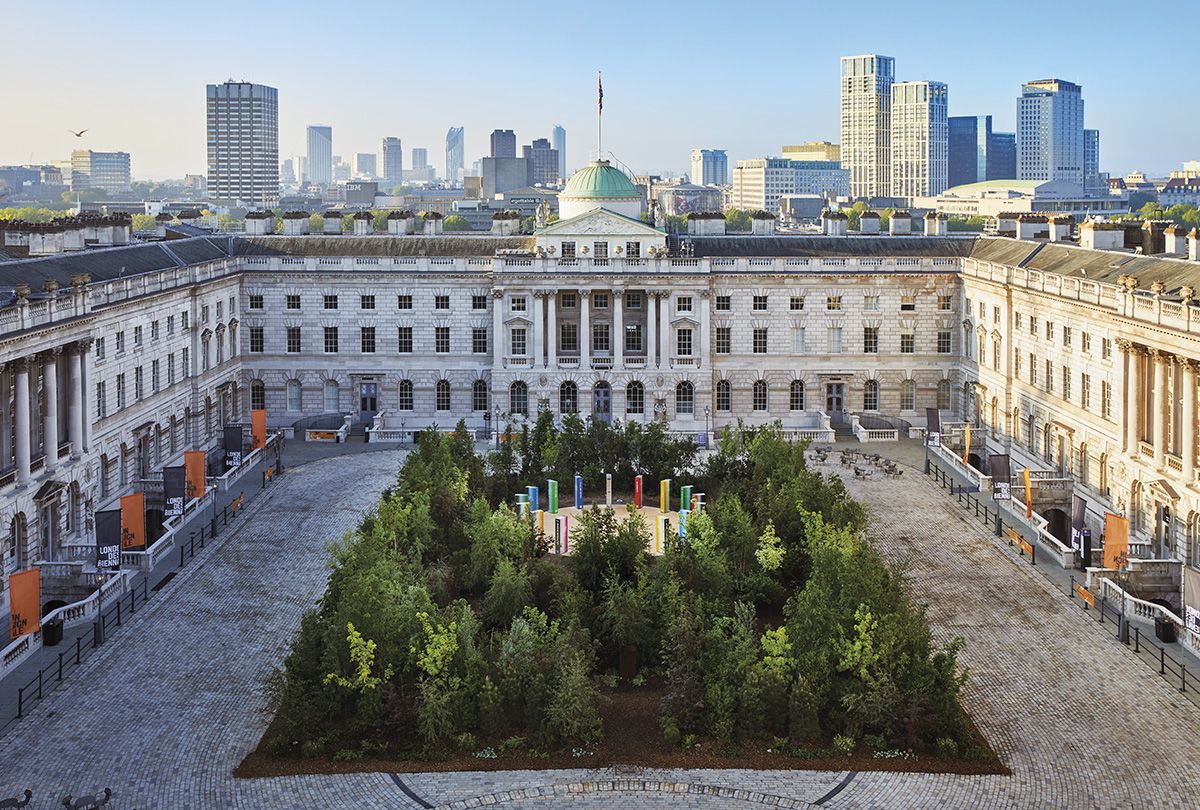This summer, urban forests are springing up around art and design institutions across Europe.
From Turin to London, museums and festivals are introducing living plants to urban settings, suggesting a shared increased awareness of the environmental impact of creative production and a desire to platform carbon-positive initiatives and environmentally aware programming.
For some institutions, tree planting has specific, practical aims. For example, the Horniman Museum and Gardens in London recently launched its plans to create an urban micro-forest along the edge of the South Circular Road, with the intention of reducing noise pollution and increasing the air quality in the museum’s gardens.
In other cases, the introduction of trees has both practical and creative connotations. In Turin, Fondazione Sandretto Re Rebaudengo (FSRR) is participating in the WeTree project, planting 20 trees in front of its art centre to create a permanent urban forest and art installation, the Boschi delle artiste (‘Artists’ Woods’). The WeTree initiative runs across four Italian cities and aims to stimulate environmental awareness through the creation of green urban areas, with trees named after celebrated women who are committed to creating a better society.
Each tree will be dedicated to a female artist, voted for by members of the public. The first phase (with Liriodendron tulipifera or Tulip trees) opens in September, and the second (with a grove of Liquidambar styraciflua or American Redgum trees) later in the autumn. FSRR’s educational department will act as ‘stewards’ for the woods, which will also provide a setting for workshops for children and adults, including vulnerable people.
Boschi delle artiste is part of FSRR’s wider approach to highlighting the intersections between art and non-human Nature. FSRR is also opening a new sculpture park in Guarene, Piedmont, where the process of curating contemporary art is inextricable from the process of caring for the landscape. FSRR is working with CO2reduction.eu to plant 2,000 trees in the park, using the land to contribute to its carbon-offsetting programme.
Art institutions’ newfound obsession with trees is also visible at Tate Modern, where artist duo Ackroyd & Harvey have temporarily installed 100 oak saplings in front of the museum’s industrial architecture. The installation is intended to mark 100 years since the birth of Joseph Beuys, taking direct inspiration from the artist’s 1982–87 work 7000 Oaks – City Forestation Instead of City Administration, in which Beuys and his helpers planted a forest of 7,000 oak trees alongside 7,000 basalt rocks, permanently altering the local cityscape in Kassel, Germany.
Ackroyd & Harvey collected acorns from Beuys’ original oaks in 2007 and have cared for the sprouted saplings ever since (with help from various other organisations and individuals). The oaks’ slow rate of growth and the artists’ long-term nurturing of them hint at the non-human timescale of trees – and consequently at the shockingly fast rate of human-caused deforestation, species loss and global heating.
Ackroyd & Harvey are co-founders of Culture Declares Emergency – see Sowing Seeds for Rebellion, Issue 316 – a movement dedicated to helping individuals and organisations within the cultural sector to sustain the planet. Tate’s platforming of their work is connected to its own declaration of a climate emergency and ties in with projects at other sites, such as Cooking Sections’ intervention at Tate Britain, Salmon: A Red Herring – see Resurgence & Ecologist issue 324. After the exhibition period finishes, most of the trees will be rehomed in a community garden in Canada Water, south-east London, and the artists are looking to work with local community groups to find permanent homes near Tate Modern for seven of them.
Just across the river, the courtyard of Somerset House is being taken over by Es Devlin’s Forest for Change as part of the London Design Biennale. Devlin, artistic director of the Biennale, explains, “When I was first shown around Somerset House many years ago, I discovered that the Enlightenment principles on which the building was conceived specifically forbade the introduction of trees into the courtyard.”
Devlin’s project aims to counter this narrative of human dominance over Nature by introducing 400 trees to an area usually kept bare of greenery. The urban ‘forest’ will include a mix of 27 different tree species, chosen for their resilience in a changing climate. After the project ends, the trees will be donated to and planted in various London boroughs, adding to the reforestation of the city. The project will be carbon-positive, planting sufficient trees after the Biennale to offset its carbon footprint three times over.
Forest for Change is intended to create awareness of the United Nations’ 17 Global Goals for Sustainable Development – a plan adopted by 193 countries in 2015 to end poverty, conquer inequality and fix climate change by 2030. A pavilion in a central ‘clearing’ in the forest is used to explain the goals and encourage visitors to contribute to the project by voicing the changes that most matter to them.
In many cultures, forests are places of transformation; in a common folkloric trope, human beings disappear into the forest and come back changed, often after unexpected encounters with the non-human. Many of these urban reforestation projects are intended to change viewers’ perceptions; press releases abound with statements about ‘addressing’, ‘encouraging reflection on’, and ‘raising awareness’ of the climate crisis, as well as ‘inspiring public conversations’ and ‘sparking positive change’.
The connection between ‘raising awareness’ and ‘positive change’ is not always made clear, however, and combining vocabulary around sustainability and tree-planting hints at carbon offsetting without explicitly committing to specific targets or programmes. Planting 7, 20, or 400 trees in urban spaces makes a fairly negligible contribution to urban reforestation or to decarbonising city centres; London is already home to over 8 million trees.
Nevertheless, the power of these projects may lie in providing people in urban areas with an open-ended interaction with plants. By presenting the act of planting and nurturing a tree as a creative process as well as a practical response to the ecological crisis, these installations at Tate, Somerset House and Fondazione Sandretto Re Rebaudengo offer new ways of connecting with and caring about the more-than-human world. Through creative thinking, perhaps the transformative power of the forest can effect change even in the heart of the concrete jungle.








